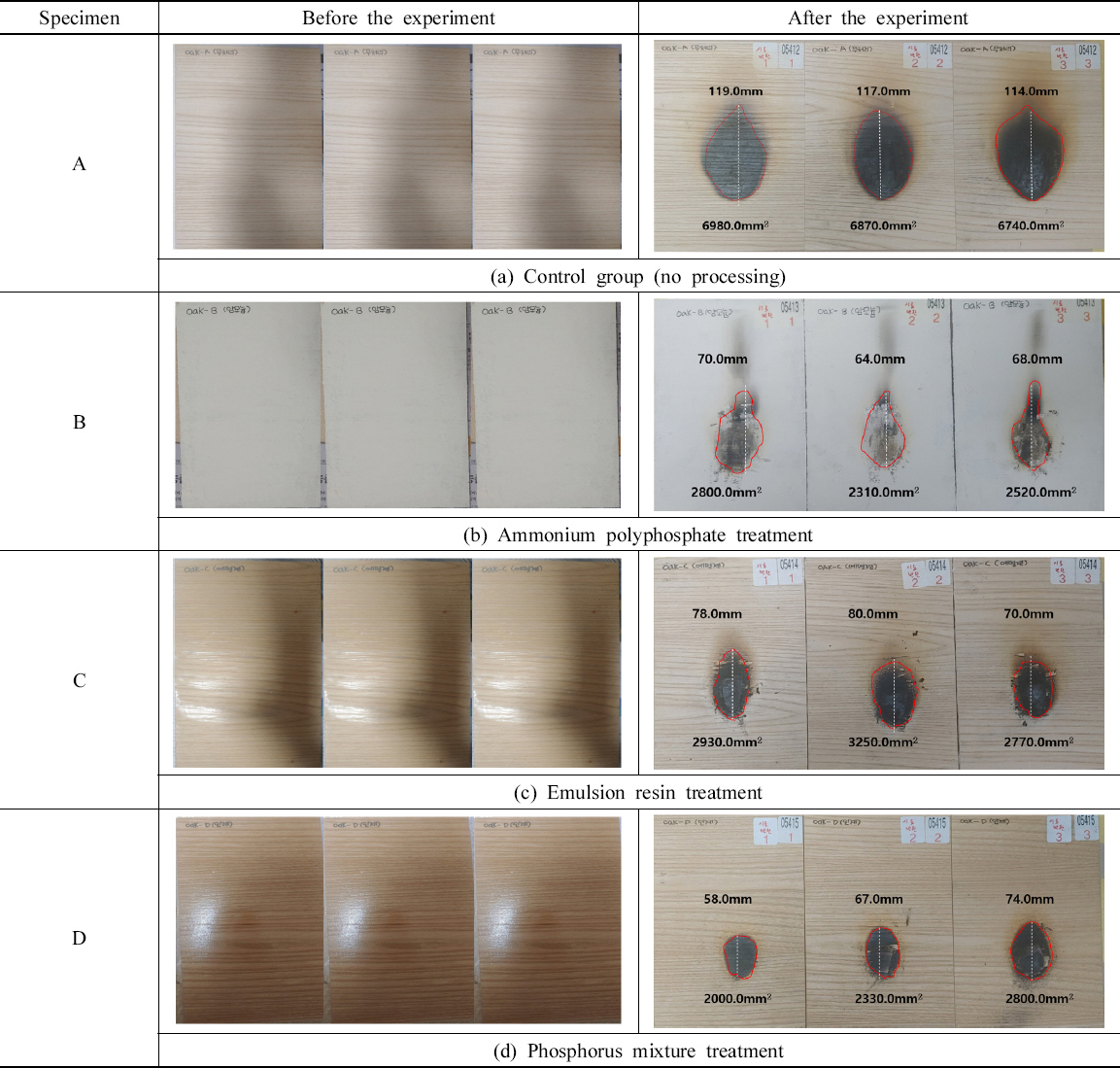2. Choi, J.M (2011) A study on combustion characteristics of fire retardant treated pinus densiflora and pinus koraiensis.
Korean Institute of Fire Science &Engineering, Vol. 39, No. 3, pp. 244-251.

3. Dumolin-Lapègue, S, Demesure, B, Fineschi, S, Le Come, V, and Petit, R.J (1997) Phylogeographic structure of white oaks throughout the european continent.
The Genetics Society of America, Vol. 146, No. 4, pp. 1475-1487.


4. Eom, Y.G (2007) Wood and engineering wood as environment- friendly building materials.
Air Cleaning Technology, Vol. 20, No. 2, pp. 26-49.

5. ESC Co. Ltd (2022)
Answer questions about ESCON-390Y products, pp. 1.

6. Fire and Disaster Prevention Newspaper (2005).
Forest fires in Gangwon province destroyed more than 400 hectares of forest. Retrieved January 26, 2023, from
https://fpn119.co.kr/2791.

7. Fire and Disaster Prevention Newspaper (2008).
National treasure No. 1 sungnyemun in Republic Korea fire completely collapses. Retrieved January 26, 2023, from
https://fpn119.co.kr/5984.

8. Hardy, M.L (1999) Regulatory status and environmental properties of brominated flame retardants undergoing risk assessment in the EU:DBDPO, OBDPO, PeBDPO and HBCD.
Polym. Degrad. Stab, Vol. 64, No. 3, pp. 545-556.

9. He, X, Li, X, Zhong, Z, Yan, Y, Mou, Q, Yao, C, and Wang, C (2014) The fabrication and properties characterization of wood-based flame retardant composites.
Journal of Nanomaterials, Vol. 2014, pp. 1-6.


10. Jung, G.J (2001) Fire accident cases in multiple-use facilities.
Korean Fire Insurance Association, Vol. 88, pp. 26-27.

11. KCC (2021)
Fireproof paint (transparent/matte) technical data into the forest, pp. 1-2.

12. Kim, C.H (2006).
A study on the analysis of causes of damage in multiple-use facilities and countermeasures through cases. p 17-20. Graduate School of Industrial Studies, Seoul National University of Science and Technology.

13. Kim, J.K, Go, S.H, Gu, C.D, Kim, K.W, Kim, J.G, Kim, J.J, et al (2020).
The study of forest protection. p 42. Hyangmun Publishing.

14. Kim, Y.M (2015).
A study on the improvements of on-site flame retardant treatment. Dongshin University Frie- fighting Department.

15. Kim, Y.S, and Cho, S.O (2013) A study on using the interior finishing material using regulation at mutiple-using businesses.
Journal of the Korean Institute of Interior Design, Vol. 22, No. 5, pp. 216-224.

16. Lee, J.W (2022) A study on ways to improve safety management through analysis of fire cases in multiple- user buildings.
The Journal of the Convergence on Culture Technology (JCCT), Vol. 8, No. 3, pp. 191-201.

17. Lee, S.H, Kim, H.J, Lee, S.E, and Oh, K.H (2011) A study on the ignition delay effect in the reduced-scale fire by flame-resistant treated plywood.
Korean Institute of Fire Science &Engineering, Vol. 2011, pp. 180-187.

18. Lim, N.G, Heo, J.W, and Park, C.W (2008) An experimental study on flame resistant performance by flame resistant method and agents.
The Journal of the Korea Institute of Building Construction, Vol. 8, No. 6, pp. 117-122.

19. National Fire Protection Association 921 CODE (2017)
Standard for chimneys, fireplaces, vents, and solid fuel-burning appliances. NFPA.

22. Park, C.K (2021).
Development of eco-friendly flame retardant deparment. Mechatronics Engineering Graduate School, Kyungil University.

23. Park, K.J (2018).
A study on fire prevention of the wool fuel heating system. Inje University Dapartment of Emergency and Disaster Management.

24. Park, S.H, Han, Y.J, and Son, D.W (2020) Flame retardancy of wood products by spreading concentration and impregnation time of flame retardant.
J. Korean Wood Sci. Technol, Vol. 48, No. 4, pp. 417-430.


25. Royal Botanic Gardens, Kew (2020).
Quercus L. Plants of the world online. Retrieved September 30, 2020, from
https://www.kew.org/.

26. Samhwa Paint Industry Co., Ltd (2018)
New fireproof coat plus water-borne product safety data, pp. 1-6.

27. Shi, N (2011).
Combustive characteristics of wood treated with chemical agents. Graduate School of Industry &Science, Kangwon National University.

28. Shin, M.J (2021).
Architectural terminology-wood. Anlstudio: Korean Architects no. 623.

29. Tanaka, Y (1988).
Epoxy resin chemistry and technology. New York: Marcel Dekker.

30. Woo, T.Y, You, J.S, and Chung, Y.J (2017) Combustion properties of construction lumber used in everyday life.
Fire Sci. Eng, Vol. 31, No. 2, pp. 37-43.

31. Xu, J, He, Y, Tang, R, Jiao, Y, and Qu, H (2006).
Synthesis and application of flame retardant on wood of hexachlorocyclotriphosphazene. p 170-174. Hebei University Bulletin, Natural Science Edition.













